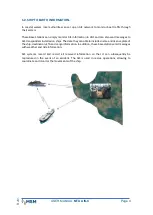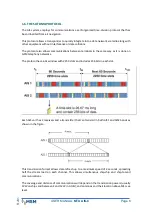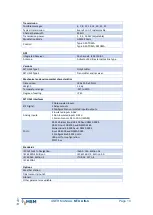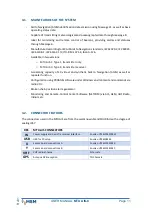
USER MANUAL
MTU AIS-C
Page 5
R
v0
1
1.3.
VESSEL TRAFFIC SYSTEMS VTS
AIS information integrates with VTS systems and provides a powerful tool to monitor ship
movements in the port areas. The combination of the use of Radar and AIS on a single VTS
display provides very reliable and accurate information, especially in areas outside radar range.
1.4.
HOW DOES AIS WORK?
The AIS system can work in three ways:
-
Standalone or continuous mode.
-
Assigned mode.
-
Interrogation mode.
Standalone or continuous mode.
In this mode the AIS transponder transmits your position information freely until it enters the
buffer of an AIS base station or other ship. At this point they both synchronize their AIS
computers and remain in this state until they communicate with any other AIS drive.
Assigned mode.
In this mode the base station assigns a slot to each AIS transponder within its action area and
defines the refresh rate of the data.
Interrogation Mode
The AIS transponder provides position information and other data when questioned by another
ship or base station.
BASIC COMPONENTS.
The basic components that allow the operation of an AIS transponder are:
2 TDMA receivers
1 receptor FDMA.
1 trasmisor TDMA
1 microprocessor.
1 interface with navigation sensors.
1.5.
FREQUENCIES AND AIS TRANSMISSION.
The internationally defined AIS frequencies for use in maritime traffic are:
AIS 1 = 161,975 MHz
AIS 2 = 162,025 MHz.
AIS transponders can work at different frequencies, within the same band. The working
frequencies are defined regionally by the competent national authority.
The AIS can be controlled by DSC (digital selective calling) to move to another frequency with a
bandwidth of 25 KHz.









































